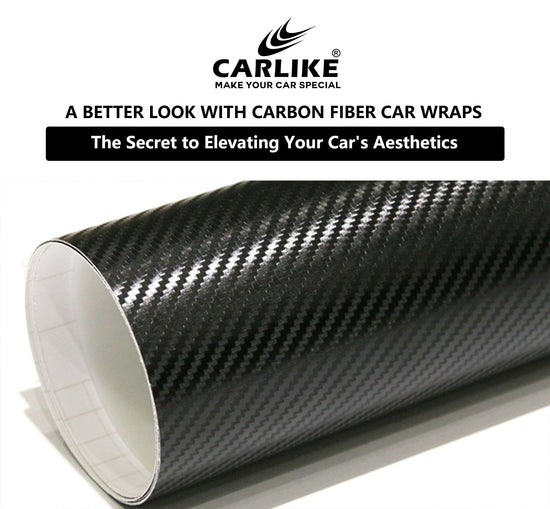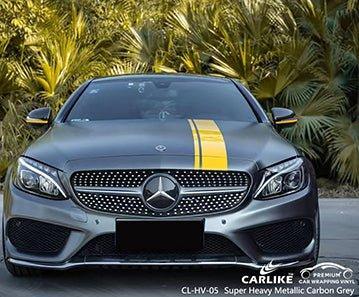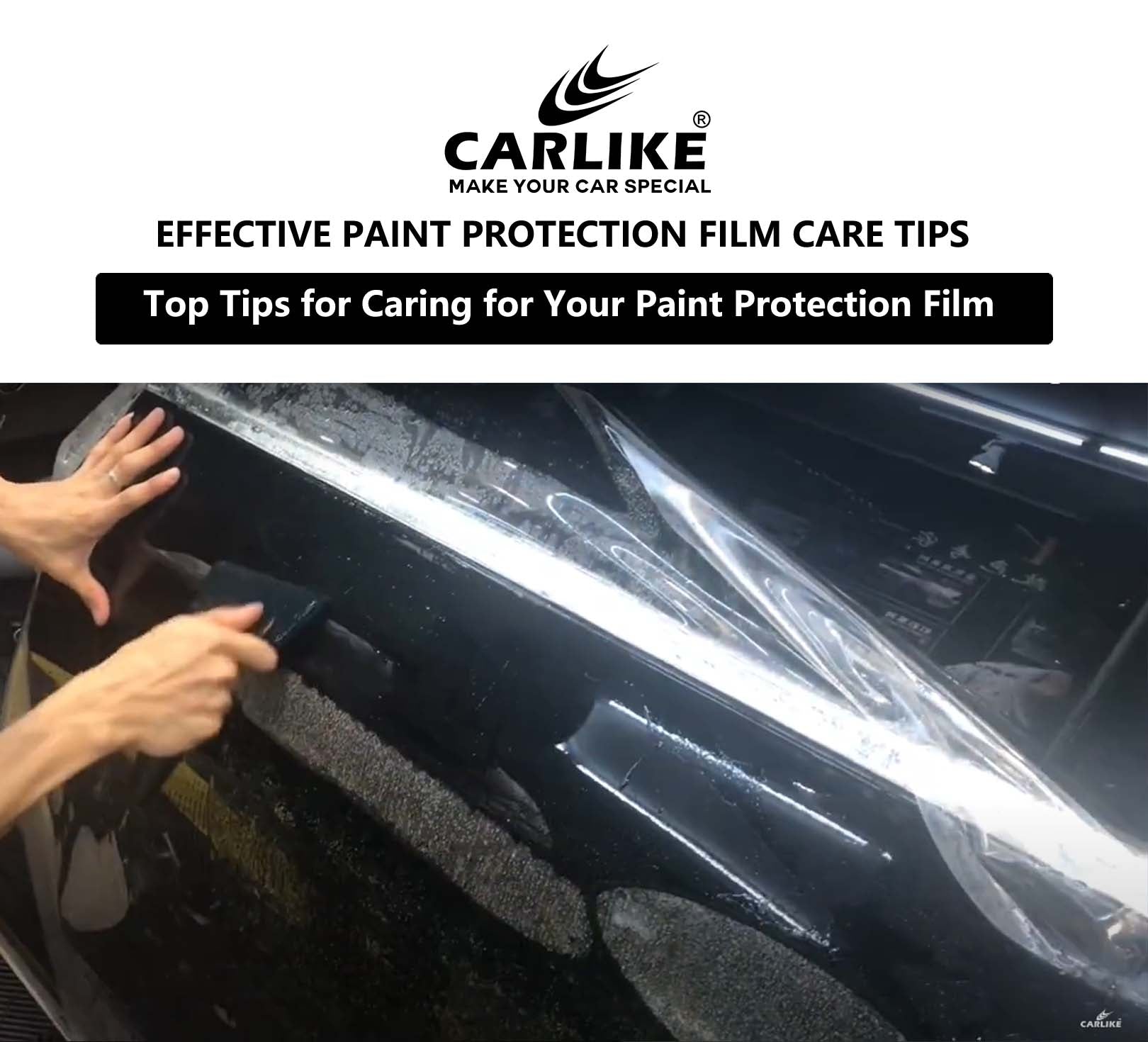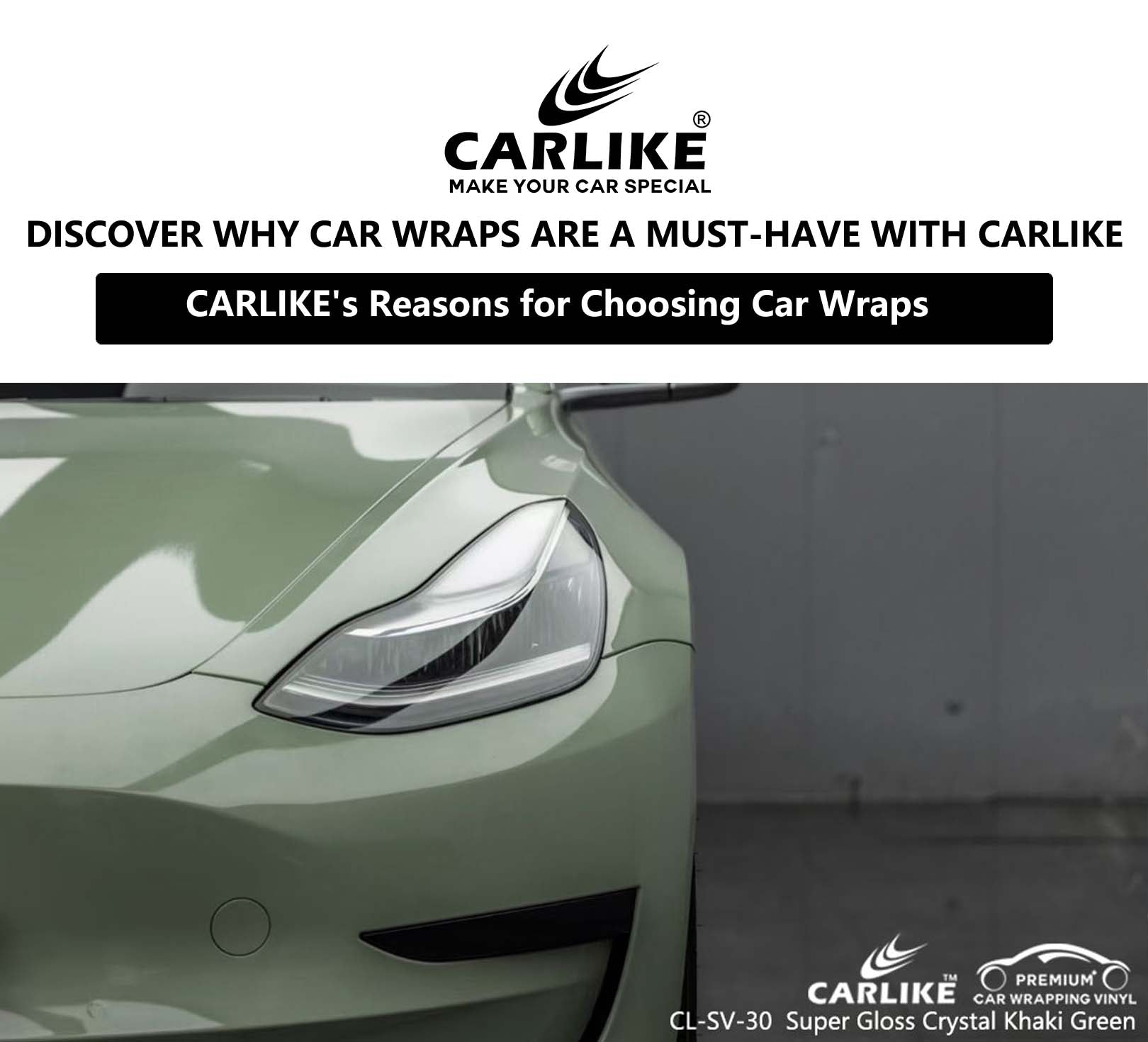CARLIKE offers a range of carbon fiber vinyl wraps designed for various purposes. Whether you're looking to enhance the look of your car, add a sporty touch to your motorcycle or update the style of your electronics, our carbon fiber vinyl wraps are the perfect choice. Our wraps are easy to install and provide a durable, high-quality finish that is both stylish and functional. Choose from our selection of colors and textures to create the perfect carbon fiber look for your project.
PRODUCT TECHNOLOGY
- High Polymeric Double Casting
- Air Free TECH+
- Micro Air Channel
- Low Initial Tack
- Super Stretch
- Long Time Durability
Want to know more? Visit our store: https://carlikewrap.com

What is Carbon Fiber Vinyl Wrap
Carbon fiber vinyl wrap is a synthetic material designed to mimic the appearance of real carbon fiber without the high cost associated with genuine carbon fiber components. It's commonly used in automotive customization, interior design, and other applications where a lightweight and durable carbon fiber look is desired.
The manufacturing process of carbon fiber vinyl wrap involves several steps:
1. Base Layer: A base layer of vinyl is created using polyvinyl chloride (PVC) or polyurethane (PU) as the primary material. This layer provides the structure and flexibility needed for the wrap.
2. Printing: A high-resolution image of carbon fiber is printed onto the vinyl base layer using specialized printers. This printing process is crucial in creating the realistic carbon fiber pattern.
3. Protective Layer: A clear protective layer is applied on top of the printed vinyl to safeguard the design from scratches, UV rays, and other environmental factors. This layer also enhances the gloss and durability of the wrap.
4. Adhesive Backing: An adhesive layer is added to the back of the vinyl wrap, allowing it to adhere securely to various surfaces like metal, plastic, or glass.
What are the characteristics of Carbon Fiber Vinyl Wrap?
Carbon fiber vinyl wrap is a versatile synthetic material that has gained popularity for its ability to mimic the sleek and modern appearance of real carbon fiber. Here are some key features that make carbon fiber vinyl wrap a preferred choice for various applications:
1. Appearance: One of the primary attractions of carbon fiber vinyl wrap is its striking resemblance to genuine carbon fiber. The intricate weave pattern and glossy finish give items a high-end and modern aesthetic, making them stand out and appear more luxurious.
2. Protection: Beyond its visual appeal, carbon fiber vinyl wrap also serves as a protective layer for the surface of items. It acts as a shield against scratches, abrasions, and stains, helping to maintain the pristine condition of the underlying material. This added protection can prolong the lifespan of items and reduce maintenance efforts.
3. Customizability: Carbon fiber vinyl wrap offers a high degree of customization, allowing individuals to tailor the look of their items according to personal preferences. Whether you prefer a classic black carbon fiber pattern or want to experiment with vibrant colors and unique textures, there are various options available to suit different tastes and styles.
In summary, carbon fiber vinyl wrap combines aesthetic appeal with practical benefits, offering a cost-effective and customizable solution for enhancing the appearance and durability of various items. Whether used in automotive detailing, interior design, or other creative projects, carbon fiber vinyl wrap provides a modern and protective finish that captivates attention and adds value to objects.
how to install carbon fiber vinyl wrap
Installing carbon fiber vinyl wrap requires precision, patience, and attention to detail to achieve a flawless finish. Here's a detailed step-by-step guide on how to install carbon fiber vinyl wrap, along with suggestions on potential challenges and how to overcome them:
Preparation
1. Clean the Surface: Ensure the surface where the vinyl wrap will be applied is clean, smooth, and free from dirt, grease, or wax. Use a gentle cleaner and microfiber cloth to thoroughly clean the surface.
2. Gather Tools: Prepare the necessary tools for installation, including a squeegee, heat gun or hairdryer, utility knife or razor blade, and masking tape.

Installation Steps
- Measure and Cut: Measure the area you plan to wrap and cut the vinyl wrap to the appropriate size, leaving some extra material for adjustments.
- Peel and Stick: Carefully peel off the backing of the vinyl wrap, exposing the adhesive side. Align the vinyl wrap with the target surface, starting from one edge and gradually working your way across.
- Smooth Out Air Bubbles: As you apply the vinyl wrap, use a squeegee to smooth out any air bubbles or wrinkles, working from the center towards the edges.
- Use Heat for Stretching: For curved or complex surfaces, use a heat gun or hairdryer to gently heat the vinyl wrap. This makes it more pliable and allows you to stretch and conform the wrap to the contours of the surface.
- Trim Excess Material: Once the vinyl wrap is applied and smoothed out, use a utility knife or razor blade to trim away any excess material carefully. Pay attention to edges and corners to ensure a neat and professional finish.
Hot sale Products
Potential Challenges and Solutions
1. Air Bubbles: Air bubbles can form during the application process. To remove them, use a squeegee to push the air towards the nearest edge, then carefully lift the vinyl and reapply, smoothing out the area.
2. Wrinkles and Creases: If wrinkles or creases appear, use a heat gun or hairdryer to heat the affected area and gently stretch the vinyl while smoothing it out with a squeegee.

3. Adhesive Issues: If the vinyl wrap doesn't adhere properly, ensure the surface is clean and free from contaminants. You may also need to apply more pressure with the squeegee or use a heat gun to activate the adhesive.
4. Overstretching: Be cautious not to overstretch the vinyl wrap, especially on curved surfaces, as it may cause the material to thin out or tear. Use heat to make the vinyl more pliable and work slowly to ensure even stretching.

CARLIKE-Make Your Car Special.
Final Tips
- Work in a clean and dust-free environment to minimize the risk of contaminants getting trapped under the vinyl wrap.
- Take your time and proceed with patience, especially if you're new to vinyl wrapping. Practice on smaller areas before tackling larger projects to gain confidence and improve your technique.

Recommended Products
Conclusion
By following these steps and tips, you can achieve a professional-looking vinyl wrap installation that enhances the appearance and durability of various items.
If you want carbon fiber vinyl wrap, you can check out more on our store.
Frequently Asked Questions
How does carbon fiber vinyl wrap differ from real carbon fiber?
While carbon fiber vinyl wrap looks similar to real carbon fiber, it is made from synthetic materials like polyvinyl chloride (PVC) or polyurethane (PU) and is much more affordable. Real carbon fiber is a lightweight, high-strength material made from carbon fibers.
Is it easy to install carbon fiber vinyl wrap?
Installing carbon fiber vinyl wrap requires patience, precision, and the right tools. While it can be done as a DIY project, professional installation is recommended for achieving a flawless finish, especially on complex surfaces.
Do I need special tools for installing carbon fiber vinyl wrap?
Basic tools like a squeegee, heat gun or hairdryer, utility knife or razor blade, and masking tape are recommended for installing carbon fiber vinyl wrap. These tools help ensure a smooth and professional installation.






